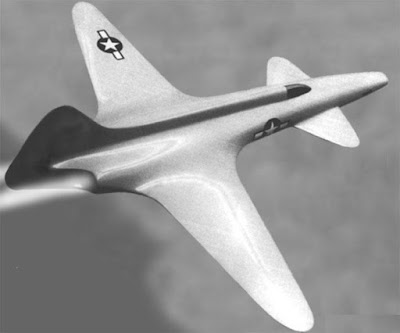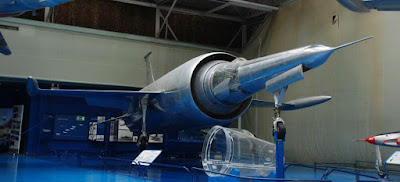The fighter jet success can be determined by many factors – its performance, sales, arm load capacity, maneuverability and combat effectiveness, But a jet has to be accepted into service first by approved by respective aerospace firm like FAA, DGCI. Thus, it is only natural that the most unsuccessful fighter jets are the ones that never left the drawing board or went beyond the prototype stage. Of course, many potentially successful jets do not enter production because of economic, political, or other non-aviation-related reasons. For example many late Soviet projects did not see mass production due to budgetary reasons after the collapse of the Soviet Union: the supersonic VTOL Yak-41 and Mikoyan’s fifth-generation attempt, the 1.44, among them. Those are not failures – they are results of changing situation around the project
To be considered a failure, the jet has to fail because of its design or manufacturing defects or not able to withstand the varying atmospheric conditions. But being a failure does not mean being bad at everything. Many failed projects were incredibly ambitious, interesting and could have succeeded if, for example, the laws of physics had been a bit gentler, or somebody would have discovered an endless source of money to cover their bloated development.
So, let’s look at some of the coolest, most interesting, most promising fighter jet failures that ever existed. The order of this list is somewhat arbitrary, yet the main criteria are the ambition of the development, as well as its uniqueness.
1. Lockheed YF-12
The YF-12 "Blackbird" was an experimental fighter-interceptor version of the Lockheed A-12 reconnaissance aircraft. In Air Force flight tests on May 1, 1965, the YF-12 set a speed record of 2,070.101 mph and an altitude record of 80,257.65 feet.
First publicly displayed at Edwards Air Force Base in 1964, the YF-12 was never adopted by the military as an operational aircraft. It was, however, a precursor to the SR-71 Blackbird reconnaissance plane.
2. Sukhoi Su-47 Berkut
It is a common misconception that the Grumman X-29 and the Sukhoi Su-47 were the only aircraft with forward-swept wings ever built. There are at least several smaller, less ambitious and civilian aircraft that successfully implemented this concept – such as Saab Safari.
This shows that the forward swept wing itself is not this insane idea that is completely impractical. It can be implemented even on supersonic jets, such as the X-29 and the Su-47, for dramatically increased maneuverability and low-speed performance. The X-29 was just a technology demonstrator, never intended to go into mass production. But the Su-47 was not. In the late 90s there was a lot of talk that it was going to become the new main Russian fighter jet and rival the American F-22, and even though no contracts were signed, the sole Berkut that took to the skies in 1997 was a prototype, not a technology demonstrator.
3. Lockheed L-133
The He-163 was still more successful than the first American fighter jet, the Lockheed L-133. But boy, was the L-133 ambitious.
Proposed in 1939 it was intended to demonstrate operational performance on par with the Korean War-era jets. With its canards, blended wing-body, slotted flaps and two engines it was truly something from the future. Way too radical, it was rejected in favor of the P-80 Shooting Star, as there was no chance the US military would invest a mind-boggling amount of money into something so advanced and unproven.
4. Leduc 022
Some of the aircraft on this list could have brought the entire aviation industry into radically different directions, had they been successful. The direction some French experiments from the 40s and the 50s proposed was so far from the one we have, they still look as something from a parallel dimension. An attempt to redefine how a fighter jet works, the Leduc 022 and its predecessors – the 0.1 and the 0.21 – featured a prone-position cockpit, a massive ramjet engine, a round air intake, and some test pilots with gonads likely made of weapons-grade uranium. The concept behind these jets was envisioned by René Leduc in 1938. Back then – just like with the Northrop XP-79 – it was not really clear what to do with those newly-invented jet engines, and how jet fighters would actually work. In contrast to the XP-79, Leduc’s designs actually worked. They flew, seven prototypes were built in total, and the French military showed a lot of interest in the supersonic, missile-armed 022.
5. IAI Lavi
It is a matter of a debate whether the Lavi, Israel’s very own fourth-generation fighter jet development, failed due to political circumstances or its internal flaws. The point is, the development was incredibly expensive. The jet was very advanced for the time, maybe even more so than the SAIA 90, and have been sucking Israeli tax payer money since the mid-70s. Its proponents have been accused of harboring an unsustainable prestige project, as purchasing a fleet of F-16s – a decision which eventually happened – would have been a lot cheaper.
There also exists a question of whether the Lavi really failed, as after the Chinese Chengdu J-10 surfaced several years later, many noted an uncanny similarity to the cancelled Israeli project. But the controversy and the alleged second life only adds to the attraction of this Israeli jet which never entered into production
.




